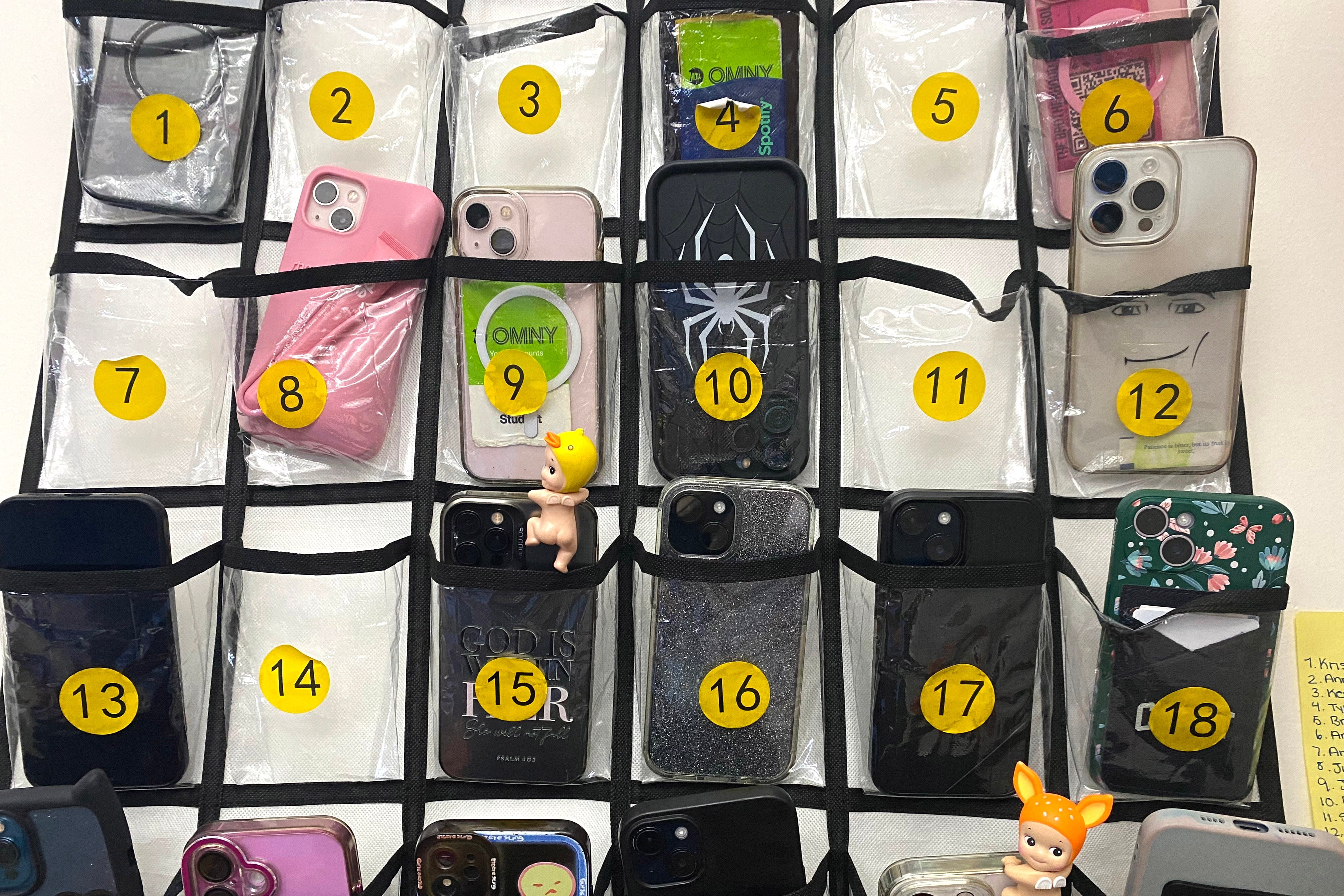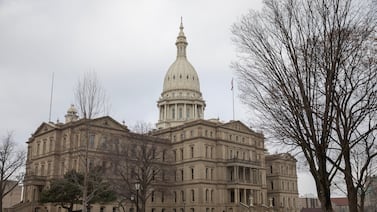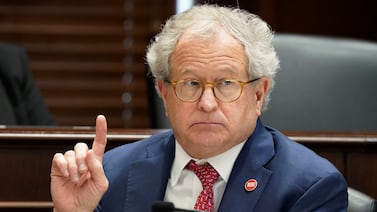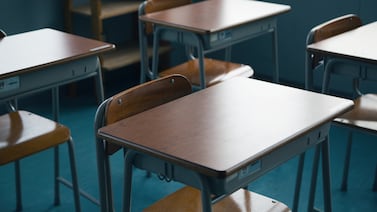Sign up for Chalkbeat New York’s free daily newsletter to get essential news about NYC’s public schools delivered to your inbox.
There are still many questions about what New York’s recently passed statewide “bell-to-bell” student cellphone ban will look like across New York City’s 1,600 public schools.
Under the policy, announced last week as part of the budget deal between Gov. Kathy Hochul and the state legislature, districts have until August to craft their own plans for how to store phones, enforce the ban, and pay for it.
But some details came into focus Tuesday as state officials released additional information.
Among the asterisks in the state policy: Students who need their phones for language translation or caregiving responsibilities may qualify for exemptions. Phones without internet access are still allowed. And despite the “bell-to-bell” label, schools that allow students off campus for lunch — a relatively common practice for New York City high schools (and even some middle schools) — can give students their phones when they’re out of the building.
Schools Chancellor Melissa Aviles-Ramos said during a January interview with the radio station WBAI that she supports collecting student cellphones and did so when she was a high school principal, but enforcing a citywide ban is complicated.
“The journey between a great concept and implementation is sometimes a long one,” she said.
Here’s what we know — and don’t yet know — about what the state policy will mean in the nation’s largest school system:
When and where does the ban apply?
At its most basic, the “bell-to-bell” approach means “no cellphones in a child’s hand from the moment they enter school until they leave,” Hochul said.
The ban applies to all public and charter schools across the state.
The ban covers any personal devices that connect to the internet, a state spokesperson said, including personal laptops, tablets, and smart watches. School-issued devices are exempt.
What about lunch and non-classroom time?
Hochul was insistent that keeping phones out of students’ hands not just during class time, but during lunch, free periods, and between classes is a critical piece of the policy.
Allowing students to keep their phones during those times would have “defeated the purpose” of the policy, she said at a press conference Tuesday alongside state teachers union officials, parent advocates and students.
“You had that distraction … sitting in their pocket that you could whip out during lunch or study hall. They would never even talk to another student during study hall or lunch,” she said.
In New York City, some schools that collect phones during the school day allow students to retrieve their devices when they leave campus for lunch. A spokesperson for Hochul confirmed that arrangement is permitted under the state law, which only applies to student cellphone use on school grounds.
One city principal, however, noted that redistributing and collecting phones during lunch would require additional staff.
How are schools supposed to collect phones?
The policy gives schools the freedom to come up with their own approach. Many New York City schools have turned to Yondr, a company that produces magnetized pouches that students carry to store their phones in during the school day, and schools can unlock at the end of the day. (Some teenagers have figured out how to open the pouches.)
Other common storage systems include cubbies and bins.
Policies in which individual classroom teachers collect phones at the start of the class period and return them at the end appear to violate the state policy.
How much is this going to cost, and who’s paying?
In the final budget deal, state officials set aside $13.5 million to help districts implement the ban. But New York City officials are predicting much higher costs.
In budget documents released last week, the city’s Office of Management and Budget projected that implementing the ban will cost $25 million, which it said was based on the costs of pouches.
Public schools in the five boroughs have historically had to dip into their own budgets to purchase cellphone storage systems, which can cost up to $30 a student. Some school administrators also expect to spend more on staffing costs to implement their collection systems.
Are there exceptions to the ban?
Yes. State officials said the smartphone ban will not apply to students who need their device to manage a medical condition, whose Individual Education Programs or IEPs mandate access to their device, who need it for academic or other “legitimate” purposes including “translation, family caregiving and emergencies.”
At some city schools, those categories may cover a substantial chunk of the student body. One principal of a transfer school for older students who have struggled in traditional high schools said many students rely on cellphones to juggle adult responsibilities like caring for their own children or coordinating full-time jobs.
The principal, who spoke on the condition of anonymity, worried that the process of awarding exemptions could become subjective and contentious with students.
The ban also only applies to internet-enabled devices, so students can still bring cellphones that don’t have internet access.
How will it be enforced?
Individual districts will come up with their own enforcement plans. But the state law contains some safeguards, including “monitoring of disparate enforcement and a prohibition on suspensions solely for a violation of the internet-enabled device policy,” said a Hochul spokesperson. State officials will require districts to report regularly on disciplinary action related to the cellphone ban, the spokesperson added.
The possibility that enforcing the ban could result in additional conflicts between students and educators — and in consequences that disproportionately fall on students already more likely to get tangled up in school discipline — has been a major concern of some skeptics of the policy.
What about when parents need to reach kids?
The policy mandates that schools “give parents a way to contact their kids during the day when necessary.”
Former schools Chancellor David Banks said when he began talking to schools about cellphone use, he quickly discovered that parents and guardians were often contacting their kids during school hours. Some parents have raised concerns about being able to contact their kids in the event of an emergency like a school shooting, though Hochul said she’s heard from law enforcement that students having access to their phones during emergencies could actually pose more safety risks.
State Education Commissioner Betty Rosa also raised concerns shortly after the inauguration of President Donald Trump that banning phones at schools may pose communication challenges for immigrant students who want to stay in touch with their family members at a time of heightened deportation fears.
Districts and schools must consult families while crafting their plans, state officials said.
Michael Elsen-Rooney is a reporter for Chalkbeat New York, covering NYC public schools. Contact Michael at melsen-rooney@chalkbeat.org.






